This story from the Australian Aviation archives is from August 2008, when Andrew McLaughlin was on board a delivery flight of a Cathay Pacific Boeing 777-300ER from Seattle to Hong Kong.
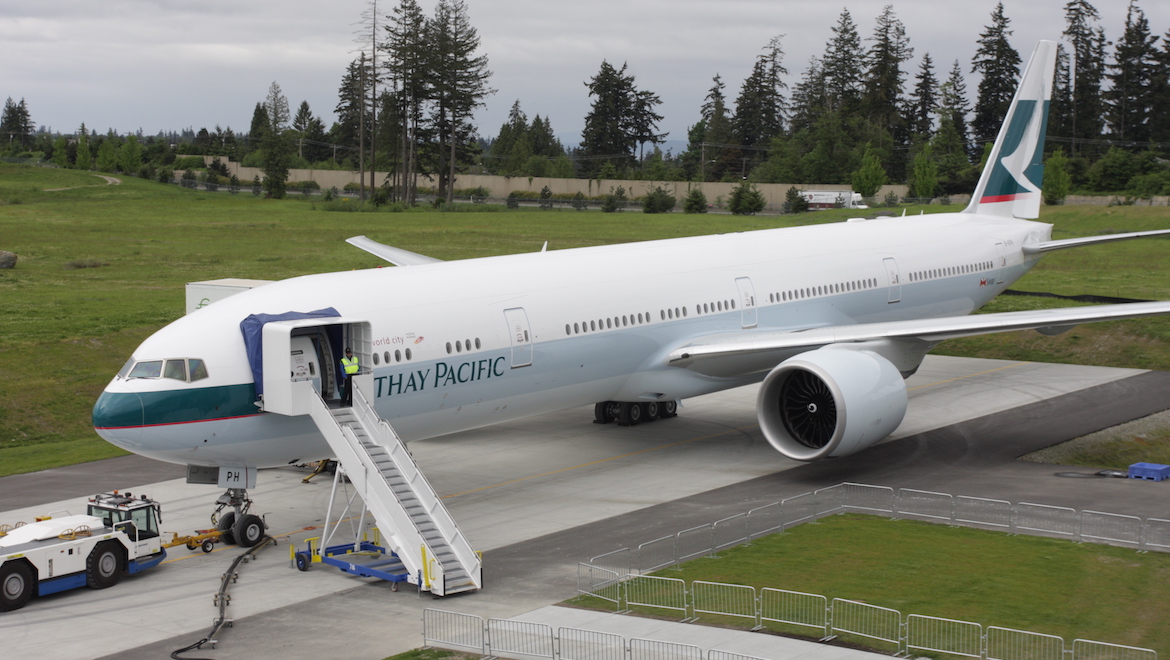
In late May 2008, Cathay Pacific took delivery of its eighth Boeing 777-300ER, a leased aircraft which was also the 75th 777 to be acquired by International Lease Finance Corp (ILFC), the world’s largest lessor.
To commemorate the delivery, a number of Cathay’s elite Marco Polo customers, Hong Kong aviation officials and media, including Australian Aviation, were invited to Seattle for the handover of the aircraft and for its delivery flight to Hong Kong.
The Boeing factory at Snohomish County Airport/Paine Field, Everett, about 30km north of Seattle, has to be seen to be believed; it is simply huge! There are four production lines at Everett, one each for the 767, 747, 777 and the new generation 787, as well as fabrication shops, test cells and rigs, receiving and holding areas and other facilities, all under one roof. The building covers 40 hectares (98 acres), and has an internal volume of 13.3 million cubic metres, making it the world’s largest by volume.
Almost all the 777s being built now are either 777‑200ER, -200LR or -300ER models, as demand for the original 777-200 and ‘non-ER’ -300 variants has waned in recent years. Completing the 777 line is the new 777F freighter, the first of which was rolled out in May and commenced flight testing in early July.
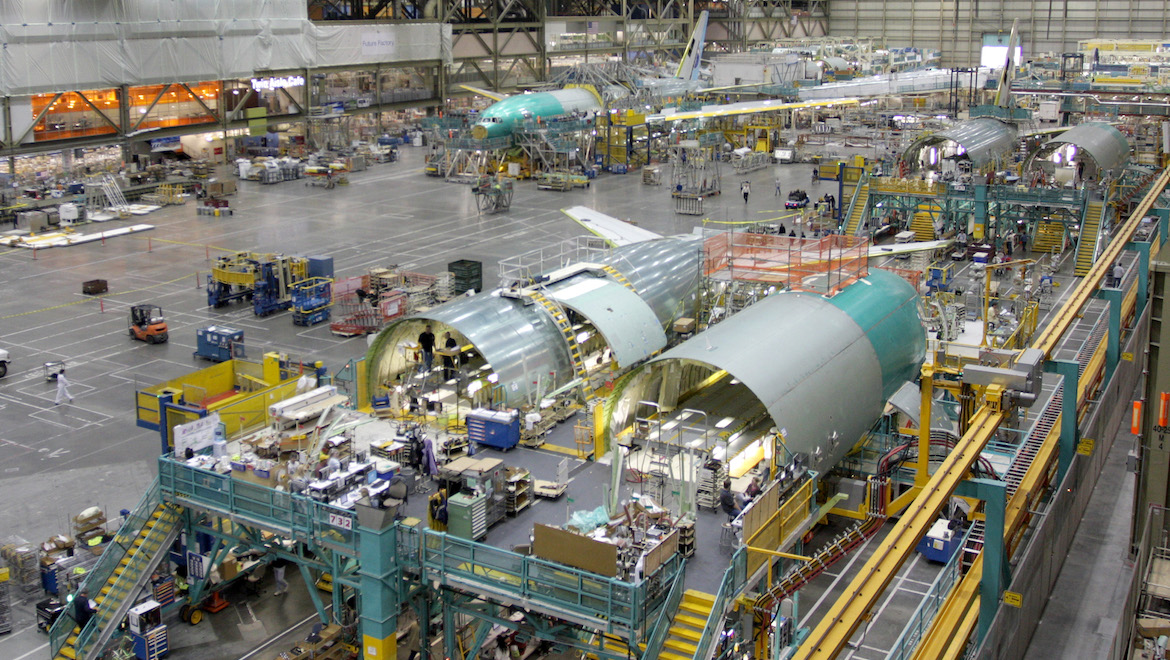
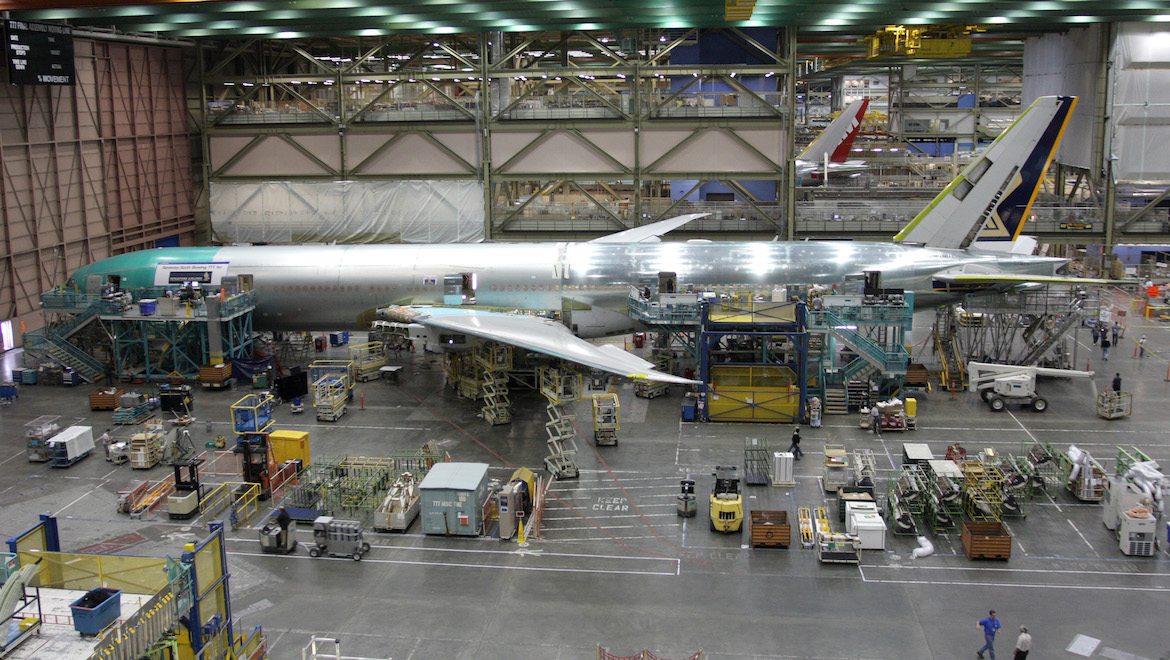
Boeing representatives note that demand for the 777 has been “phenomenal” in recent years, with the various models of the aircraft consistently outselling their rival Airbus A340 equivalents. The company claims the twin engined 777-200ER offers 17 per cent lower operating costs compared to the four-engined A340-300, the ultra long range 777-200LR 21 per cent lower costs against the equivalent A340-500, and the higher capacity 777-300ER 23 per cent against the A340-600.
Perhaps these numbers are reflected in the fact that Cathay Pacific is replacing not only its entire 747-400 fleet, but also its A340-600s, with at least 30 777-300ERs.
“We just love the 777,” International Lease Finance Corp’s (ILFC) vice president of Seattle Operations, Steve Adams, told Australian Aviation.
“Not only is it one of the most fuel efficient aircraft out there, but it holds it value well too. Virtually all the 777s we’re taking now are -300ERs – it’s an aircraft that will be in high demand for quite a while, especially with the delays to the 787 program.”
As of early June, Cathay Pacific had 30 777-300ERs on order, including the eight already in service. These aircraft will replace the airline’s 24 remaining 747-400 and three A340-600s in service, with the A346s expected to have all been returned to their lessor by the end of the year.
Cathay also operates 15 A340-300s on some of its thinner long-haul routes, as well as 31 A330-300s and 12 “non-ER” 777-300s for its “regional” services which include routes to Australia, New Zealand, Asia, India and the Middle East. The airline also has 10 more A330-300s on order.
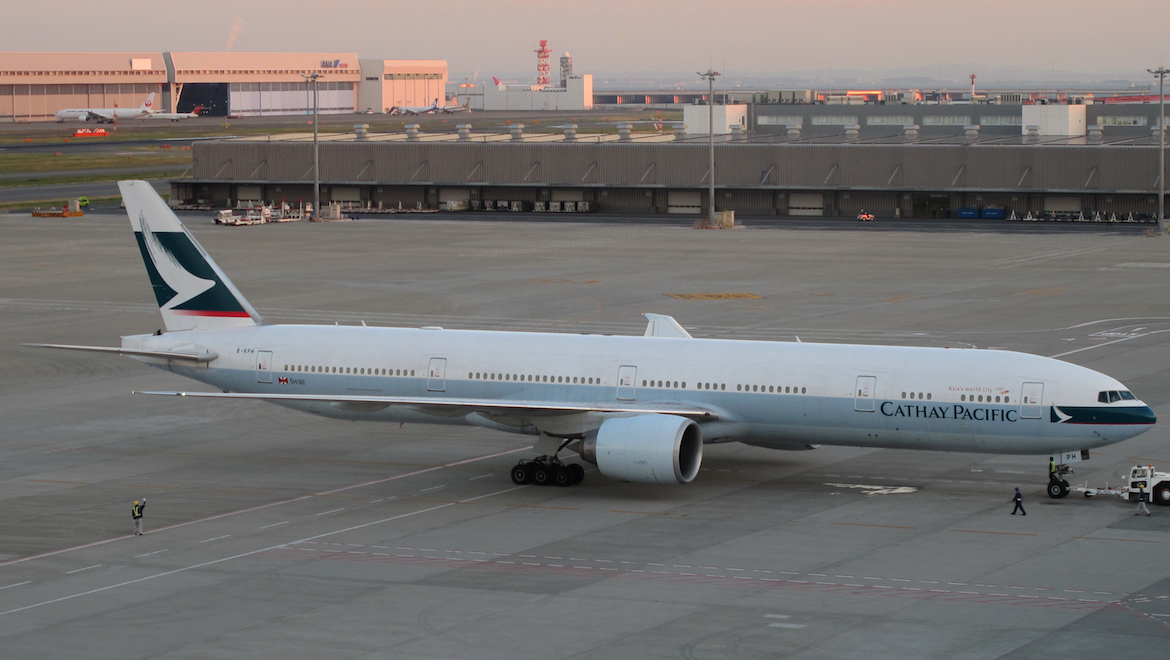
MANUFACTURE & DELIVERY
Many customers, airlines and lessors alike, start getting involved in the delivery process while the aircraft is still on the production line, conducting inspections of key areas throughout the process, while others get involved months or even years before the pieces of the aircraft even enter the cavernous production halls at Everett.
“Ideally, an airline will finalise its specifications on the aircraft about one to two years in advance of delivery – the less time they allow, the less flexibility Boeing will have in meeting their requirements,” Steve Adams said.
“As a lessor, we’re involved in their specification and configuration process along the way to ensure they get what they want, but also so it doesn’t affect our residual value of the aircraft. In the case of Cathay, they know what they want in plenty of time and are a pleasure to work with throughout the program.”
Cathay also has a permanent manager based in Seattle.
“We have one manager based there permanently, as we also do in Toulouse,” Cathay’s engineering director Chris Gibbs, told Australian Aviation.
An engineer by trade, he does quite a few quality inspections himself, and knows the 777 intimately. As a Cathay aircraft comes down the production line, there are specific points where Gibbs is called in by Boeing to check on the process.
“The other things which happen well ahead of delivery is all the buyer furnished equipment such as seats and galleys, and our local manager oversees the supply of these to Boeing on the agreed dates,” Gibbs said.
“Nearer delivery there are a lot more inspections, typically in the cabin, and there are a lot more ‘pickups’ which Boeing rectifies before acceptance.”
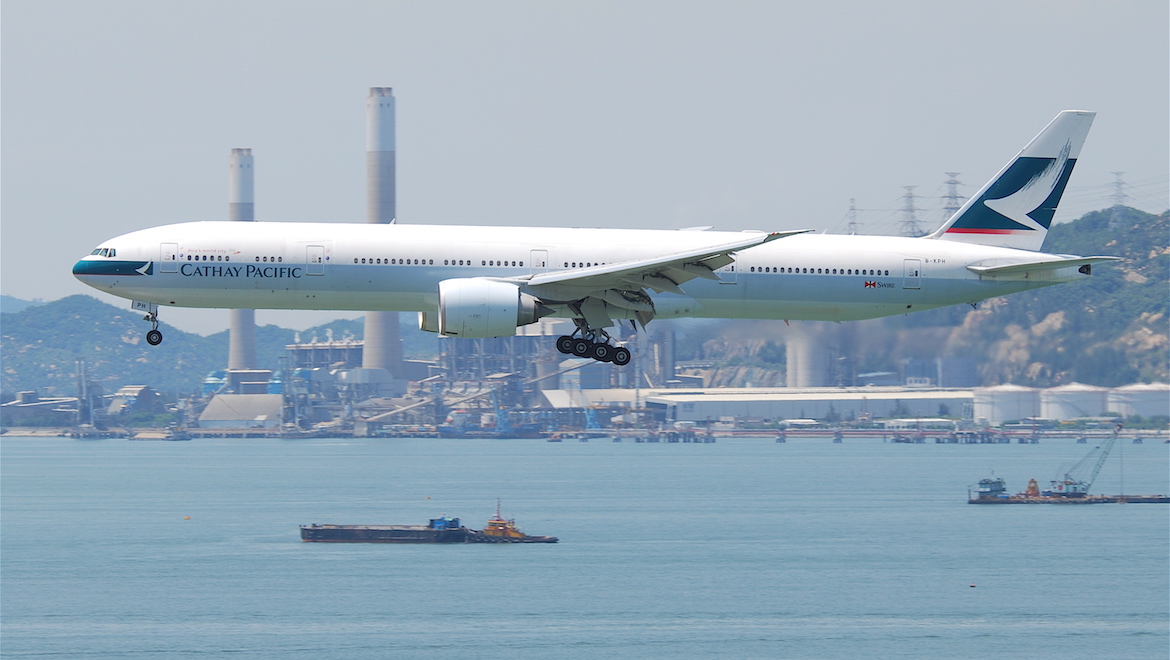
For a leased aircraft the airline then takes a step back from the process, and ILFC takes over the inspection process during and post production.
“We do about 300 inspections during final assembly and before delivery,” Adams explained. “Anything that goes on during production, we’re instantly aware of and are able to address it before delivery.”
“As it progresses through the factory we’re watching it and addressing issues.”
After the aircraft is rolled out, it is subject to further inspections prior to its first test flight and painting.
“The airplane goes to the paint hangar where the protective coatings are removed and paint is applied,” Dan Blankinship, Boeing’s engineering leader for airplane delivery, Everett programs, said.
“After the paint, the airplane moves to the fuel docks where it is fuelled and fuel testing is performed.
“Testing on the flightline is mainly testing that cannot be accomplished in the factory. These are tests of the communication systems through checks with the tower, and engine runs where the interfaces with the airplane are verified.
“The final test is the flight test, during which the airplane is put through a series of conditions, and systems are checked and verified that they are working per design.”
Steve Adams added: “Boeing conducts the ‘B1’ first flight, and we take part in the post-flight debrief to see how the aircraft performed. Sometimes it’s necessary to conduct a ‘B2’ flight to clear up any performance or handling issues, but not very often.”
“Then it goes to what we call ‘customer walk’, where the customer airline typically brings six to eight engineering people out to do a full day’s worth of inspections on the aircraft, including everything that opens and shuts,” Adams continued.
“Most of the things we find are cosmetic issues such as an IFE channel that doesn’t work, or scuff marks on wiring bundles or hydraulic lines which need to be checked. It’s rare we find anything of an airworthiness nature, but I guess it’s common to find minor snags on a large and complex aircraft like the 777.”
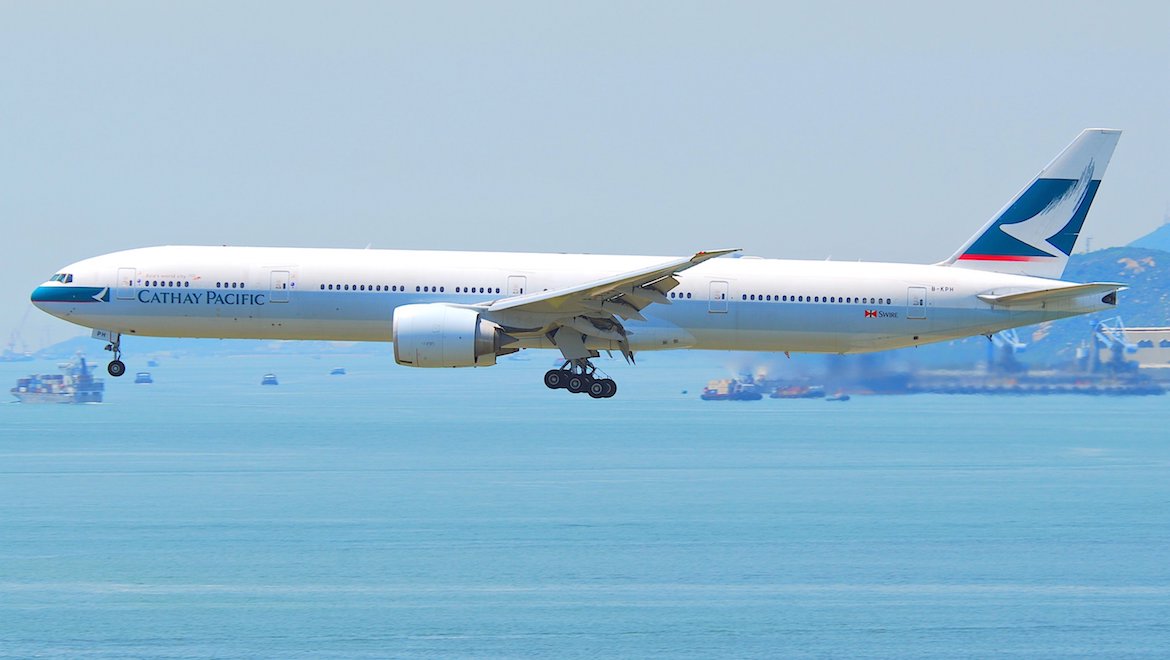
For its part, whether leasing or buying an aircraft, Cathay Pacific’s representatives in Seattle also have some involvement in the inspection process during production, are responsible for ensuring the aircraft complies with Hong Kong’s airworthiness regulations, and regularly liaise with Boeing on the aircraft’s delivery schedule.
They are also responsible for loading the airline-specific software into the aircraft’s flight management system and the IFE system.
After the customer walk, a customer airline captain will test fly the aircraft with a Boeing captain in the right hand seat to verify the aircraft’s performance and handling characteristics, and as the 777 and its manufacturing processes are now mature, Adams says there are rarely any surprises on test flights.
Following the resolution of all issues from the customer walk and test flight, the aircraft is ready to receive its Certificate of Airworthiness and be delivered to the customer.
If leasing a new aircraft, an airline will typically pay a security deposit when it orders the aircraft, and another payment equivalent to one lease period (usually monthly or quarterly) payment on signature of the leasing agreement.
Meanwhile the lessor, as the aircraft’s owner, has been making progress payments to Boeing throughout the build process.
Upon delivery of the aircraft to the customer airline, the lessor never actually takes physical possession of the aircraft.
“On delivery once we know that the airline is happy to proceed with the acceptance, all three parties, Boeing, ourselves and the airline, sit down at the table,” explains Steve Adams.
“The airline will have already signed an undated acceptance certificate after their inspection and test flight, and the acquisition funds will have been transferred from ILFC to Boeing prior to the sit down.
So we then sign and date stamp our acceptance certificate, and simultaneously date stamp the customer’s acceptance certificate, and Boeing hands over the ‘keys’ to the aircraft. It’s basically a simultaneous transfer from Boeing to the customer.”
“My job here is to oversee ILFC’s presence in Seattle,” Adams added. “I’m responsible for not only making sure ILFC gets what we’re paying Boeing for, but more importantly, that our customers get what they’re paying us for.”
“The last thing we want is to find out that a customer has had a service disruption when they get home over an issue we could have addressed here in the manufacturing or acceptance processes.”
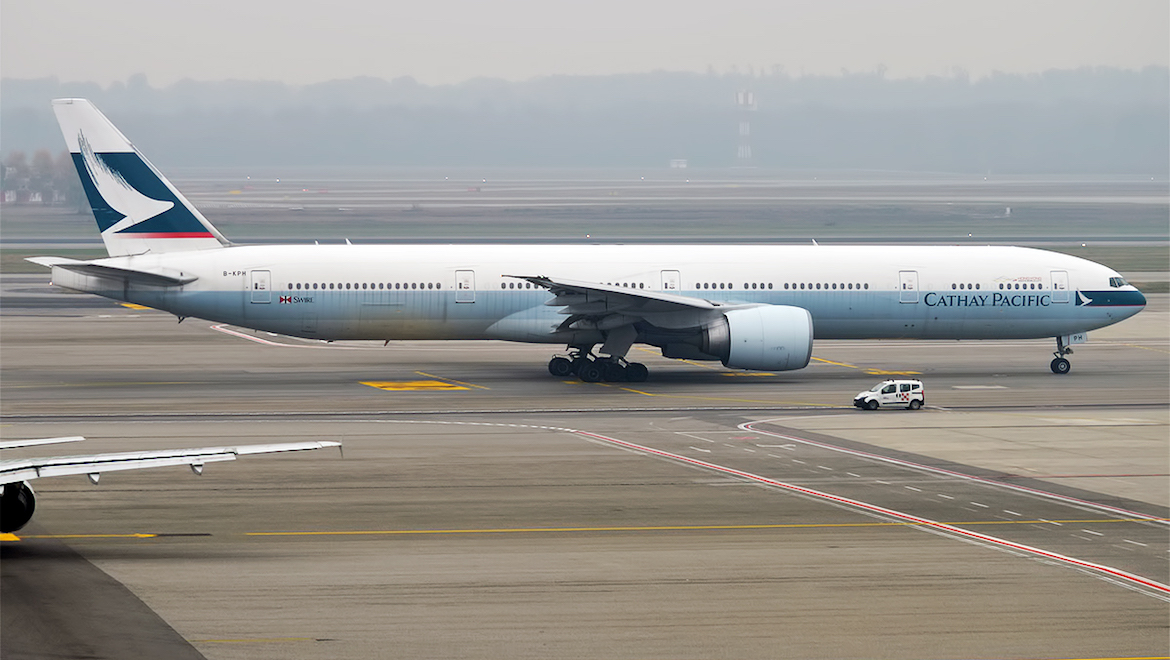
DELIVERY FLIGHT
The delivery flight of B-KPH originated from the Future of Flight Museum which sits opposite the Boeing factory at Paine Field.
The aircraft was positioned adjacent to the museum on the morning of May 29 after being fully fuelled the night before, and after the speeches and a passenger inspection of the aircraft including the obligatory photos of VIPs standing inside the engine cowls, the passengers were ushered back inside for lunch and to go through the security screening process while the crew pre-flighted the aircraft.
With only about 50 passengers on board, everyone had a first class or business class seat on this flight, so it was certainly going to be a comfortable flight across to Hong Kong.
Cathay’s new cabin products have certainly been well received by passengers.
The new first class, while not affording the unprecedented levels of privacy of Singapore Airlines’s new A380 suites, is certainly luxurious in all other aspects, with high side walls, a plush 90cm wide seat that can double as a chaise lounge with a visitor’s ottoman, or as a lie flat mattress. The seat also offers a 42cm flat IFE screen, three work surfaces and in-seat power, and plenty of storage spaces.
For business class, Cathay has adopted the “herringbone” pattern with all seats angled roughly 30 degrees towards the aisle and featuring high side walls for extra privacy. The 59cm wide seat also offers a folding table, a large 38cm flat IFE screen, and lies perfectly flat.
For takeoff and for some of the more scenic sectors of the delivery flight, your writer chose to sit back in the otherwise empty economy class. The fixed-back economy seats are 44cm wide and have a comfortable cushion, and when reclined, the base cushion slides forward rather than the seat back pivoting backwards, meaning you will not have a reclined seat back intruding into your space or your laptop pushed so close to you that you cannot see the screen! There is also noticeably more foot and shin space under the seat in front of you. Each seat has a fixed 22.5cm flat IFE screen with video on demand, and in-seat power.
Our flightplan saw us takeoff on RWY16 and initially head south towards Seattle before we turned west over Puget Sound, and the magnificent Mt Rainier was barely visible out our left side through the top of the marine layer to the south. Another turn to about 310 degrees coincided with us emerging from the cloud into bright sunshine, and we were given a superb view of the tops of the still snow-capped mountains on the Olympic Peninsula.
A look at the flight map on the IFE showed we would be flying the length of Vancouver Island and out into the Gulf of Alaska, before the great circle route saw us gradually turn west over Alaska’s Kodiak Island and the Alaska Peninsula with the spectacular scenery of the Katmai Volcano and surrounding national park, and then out into the Bering Sea.
While over Alaska, I was able to visit the flightdeck and to chat with the crew, three of whom were Australians. Captain Bill Seymour, the flight’s commander, was in the left hand seat, and was accompanied by New Zealander First Officer Julian Hyland, while Captain John Wootton and First Officer David Mills were on crew rest.
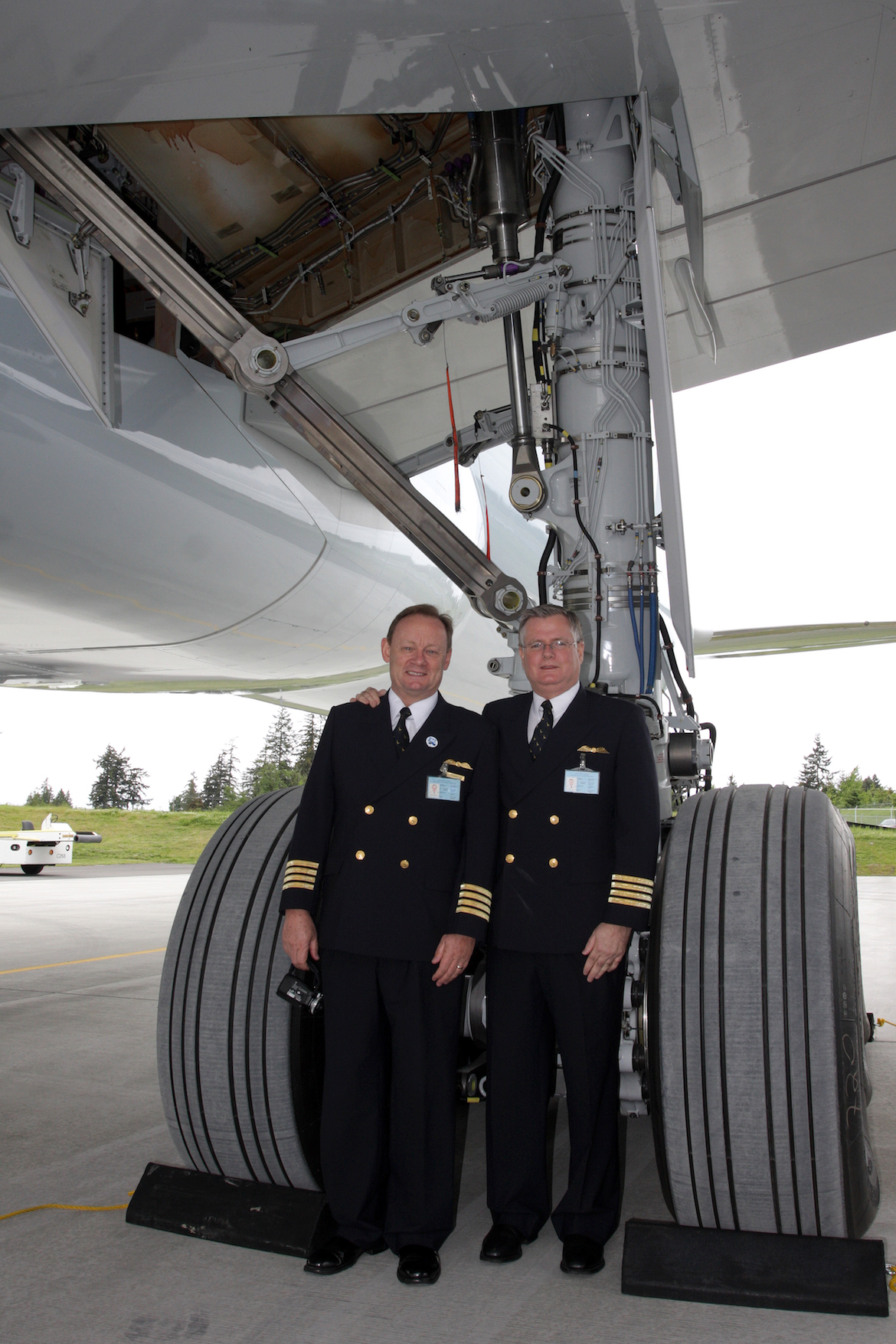
They informed that for the delivery flight we had taken on 105 tonnes of fuel for a takeoff weight of 283.3 tonnes, and expected to burn off about 88.1 tonnes of fuel en route for a landing weight of 195.2 tonnes.
By now we had reached the northern most point of our flight and our course started to take us further and further south. We later crossed the coast of Japan’s main island of Honshu northeast of Tokyo and flew the length of southern Honshu, across the Inland Sea and the island of Kyushu, before turning further south and crossing Taiwan. Our course took us almost directly south from Taiwan to a point east of Hong Kong due to a storm front over southern China, before we turned west and set up our descent for a 1620 landing on Hong Kong International’s Runway 25R.
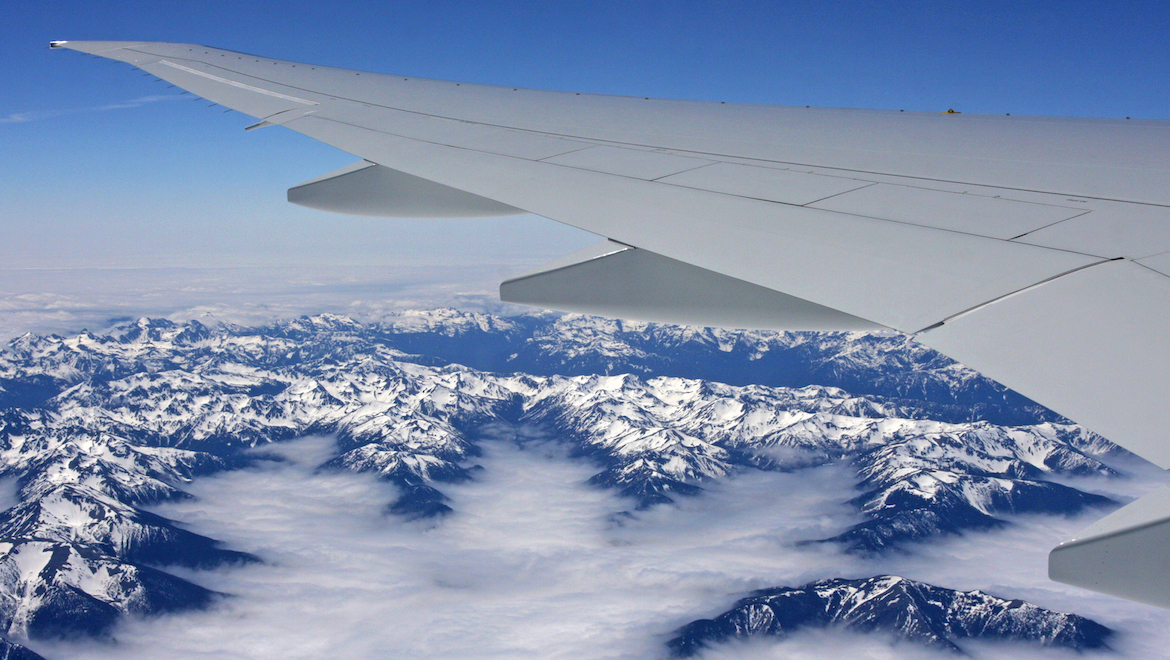
POST DELIVERY
After arrival in Hong Kong, our aircraft was then subject to some minor additional work by Cathay staff before it entered service.
“We don’t do much on our aircraft once they get back to Hong Kong,” said Chris Gibbs.
“In fact, we occasionally do a revenue service out of North America on the actual delivery flight, so you can see there’s not much to be done at all.
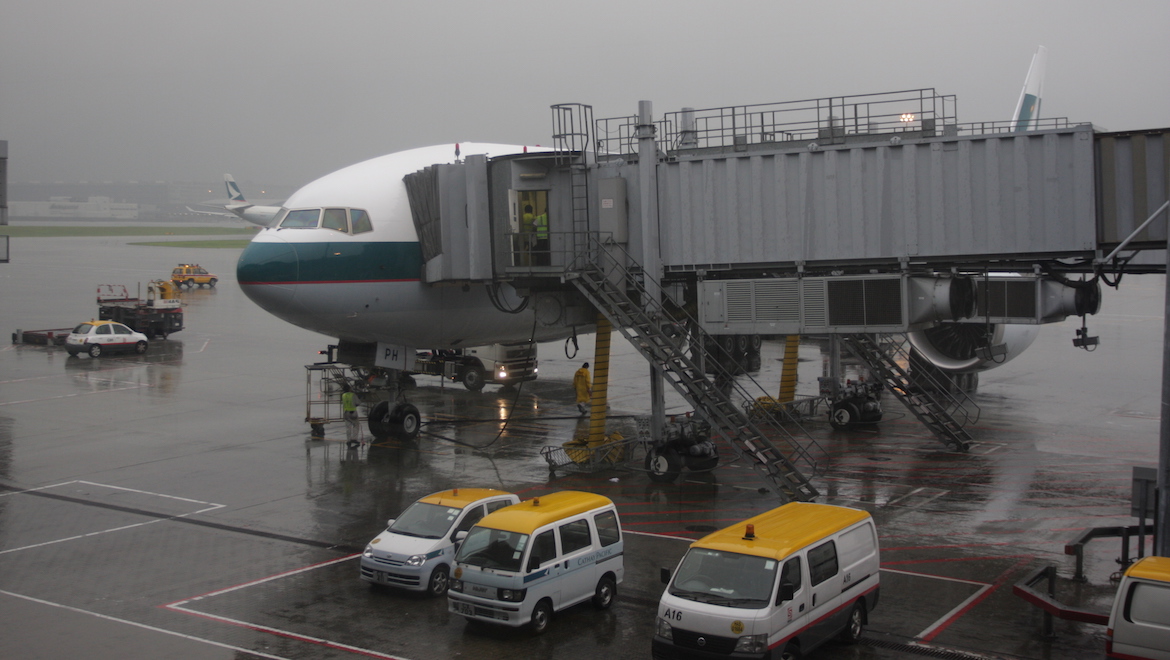
The aircraft is in Hong Kong for only two or three days before operating its first service, during which time we’ll install tailored items such as magazine racks, decals and other minor items.”
And there are no real “shake down” services either, with the aircraft going straight onto the Cathay network. In fact, after our delivery flight arrived in Hong Kong on the afternoon of May 30, B-KPH operated its first revenue service to Taipei and return on the morning of June 2, before flying a non-stop service to Toronto later that evening.
“People are often quite surprised at how few flights the aircraft has done before it enters revenue service,” related Gibbs.
VIDEO: A 2013 video showing a Cathay Pacific Boeing 777-300ER being painted into a special “The Spirit of Hong Kong” livery from the airline’s YouTube channel.
This story first appeared in the August 2008 edition ofAustralian Aviation. To read more stories like this, subscribe here.










